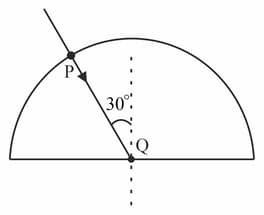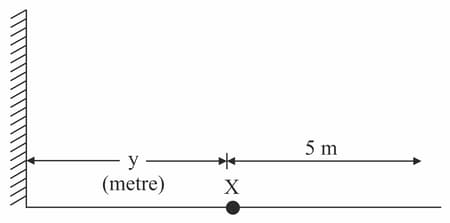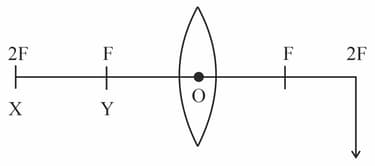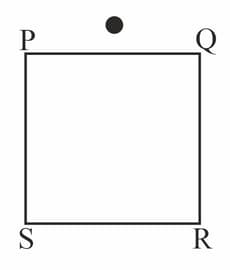A ray of light passing through a semicircular block (a denser medium) from air is shown below. Consider the given figure and select the correct option which correctly identifies the true (T) and false (F)?

(i) There is no change in the direction of ray at because light ray incident on semicircular block at .
(ii) As light rays enters the semicircular block, its frequency remains the same.
(iii) Wavelength of light rays as it enters the block decreases.
(iv) Speed of light as it enters the block increases.
(i)
(ii)
(iii)
(iv)
(A)
(B)
(C)
(D)

(ii) As light rays enters the semicircular block, its frequency remains the same.
(iii) Wavelength of light rays as it enters the block decreases.
(iv) Speed of light as it enters the block increases.

Important Questions on Light-Reflection and Refraction
A man standing at a position in front of a plane mirror, at a distance of metre from the mirror as shown in figure. When the man moves away from the mirror, the new distance between the man and his image becomes metre. What is the value of ?

To produce an image by a convex lens, at the position shown (see figure) the object is needed to be placed:

When two plane mirrors are placed parallel and facing each other and an object is kept in between them, we get infinite images. But actually only a few images are visible because the intensity of the image is:
A rectangular block of glass has a refractive index . A pin is placed midway on the face . When observed from the face the pin shall:

Which of the following options is correct in case of a concave mirror?
| Object Position | Image Position | Size of image | Nature of Image | |
| (A) | At | At | Equal to object | Real and inverted |
| (B) | Beyond | Between and | Diminished | Virtual and erect |
| (C) | Between and | At infinity | Enlarged | Real and inverted |
| (D) | At | At infinity | Highly diminished | Virtual and erect |
Which of the following correctly depicts reflections in case of plane mirrors inclined at ?
The image of an extended object placed in front of a concave mirror is formed at a distance of from the object. If the image is times bigger than the object, the magnitude of focal length of the mirror is:
